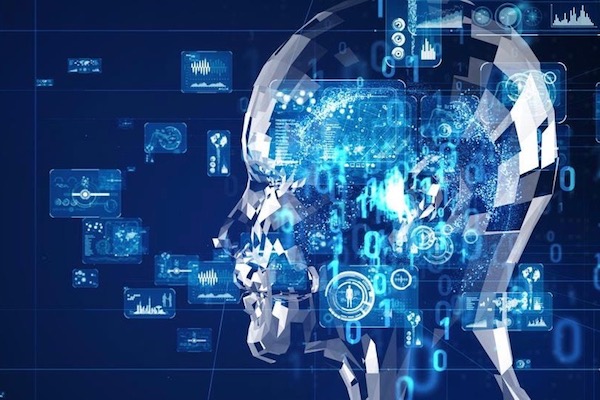Published on the 06/09/2022 | Written by Heather Wright

A quantitative look at technologies’ innovation, investment and interest…
Applied AI and industrialising machine learning are among the top trends mattering most for companies this year according to McKinsey Technology Council – with spending bearing out their claims.
Investment in applied AI investments soared 150 percent in the past three years, from US$66 billion in 2018 to US$165 billion last year according to McKinsey Technology Trends Outlook 2022.
“What impresses us more than anything else is the massive effect that technology will have on every sector.”
Both applied AI and advanced connectivity feature highly in the McKinsey analysis, which highlights 14 ‘most significant’ technology trends that matter most for companies, and is based on trend research combined with new data and deeper analysis examining factors including investment, patents, research publications and news coverage to gauge momentum of each trend.
Other technologies, including quantum computing, immersive reality technologies and next-generation software development could have major benefits for business, but McKinsey cautions that there’s still much work to be done to develop, refine and commercialise the underpinning technologies.
“As a result, it’s unclear how long it will take for these trends to be adopted in multiple sectors, let alone to realise the potential seen by proponents.”
Applied AI however, like advanced connectivity, cloud and edge computing, scores highly on quantitative measures of innovation, interest and investment, with viable applications in more industries placing it closer to mainstream adoption.
“With AI capabilities, such as ML, computer vision and natural language processing, companies in all industries can use data and derive insights to automate activities, add or augment capabilities and make better decisions.”
Jacomo Corbo, McKinsey partner, says the biggest shift affecting AI’s broad adoption is tied to more mature tooling and the emergence of a canonical technology stack that is drastically simplifying how AI solutions are engineered and integrated with other digital applications.
“AI is quickly becoming more consumable, and solutions that use AI are accessible even to organisations with few or no AI engineers of their own.”
A 2021 McKinsey Global Survey on the state of AI found 56 percent of organisations had adopted AI – up from 50 percent a year earlier. Many were also reporting financial benefits: 27 percent of respondents attributed five percent or more of their companies’ EBIT to AI.
But while AI might be popular, its success is not guaranteed. Late last year Gartner reported that 85 percent of AI and machine learning projects fail to deliver, and just last month, the analyst firm noted that only 54 percent of AI projects make it from pilot to production – up one percentage point from 2019.
McKinsey too, notes that organisational, technical, ethical and regulatory issues must be resolved before businesses can realise AI’s full potential.
Cybersecurity concerns, particularly those related to data risks and vulnerabilities, were among the concerns highlighted in the 2021 McKinsey Global Survey on the state of AI, with 55 percent citing it as a leading risk.
Another AI trend, industrialising machine learning, also gets a look in as a growing trend, though McKinsey notes it’s driven by ‘less-proven’ digital tools, leaving it in a similar position to Quantum.
Its lure of shortening the production time frame for ML applications by 90 percent means it’s expected to prove popular in industries including financial services, telecommunications, pharmaceuticals and medical products, automative and assembly, aerospace and defence and IT and electronics, where accelerating ML application production will provide competitive advantage. And McKinsey says adoption is expected to spread as more companies seek to use AI for a growing number of applications.
Scores for ML have approximately doubled across patents, investment, publications and news and around $5 billion was invested in 2021. “These increases suggest that the use of methods for industrialising ML could widen in the years ahead,” McKinsey says.
Next-generation software development – which includes low code and no-code platforms along with offerings including microservices, AI pair programmers and automated testing is still languishing in the lower end of interest, investment and innovation. That’s something McKinsey attributes to technical challenges, the need for large-scale retraining of developers and test engineers, and organisational hurdles.
“The cost–benefit balance of low-code and no-code development platforms is not yet apparent, and it may not favour all types of software applications.
“It is also likely to change over time, as these platforms alter the need for traditional developers while making it necessary for non-engineers to learn development skills.”
Auto-generated code could be less secure, defects and inefficiencies might escape reviews and there could be IP issues regarding AI-written code, the report says. Practical concerns such as how to monitor the quality of applications written by non-engineers and how to hold business units accountable for them could also be creating uncertainty.
“Nevertheless, the new technologies could enable both engineers and non-engineers to build applications quickly – thus accelerating digital transformation, delivering productivity gains and lessening the need to recruit from a scarce, competitive pool of engineering talent.”
Trust architectures and digital identity and Web3 are also highlighted in the report.
“When we look at these trends, what impresses us more than anything else is the massive effect that technology will have on every sector,” the report says.
“The next few decades promise to be a time in which technologies progress ever-more quickly from science to engineering to impact – at scale, and around the world.”
A multiplier effect from ‘combinatorial information’ as different technologies come together in creative ways, is also expected.



























